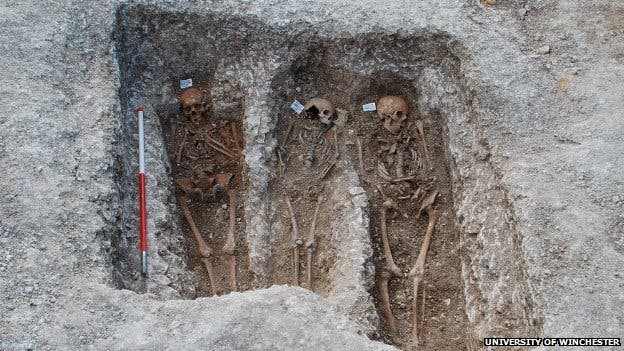Leprosy, or Hansen’s disease (HD), is a chronic infection caused by the bacteria Mycobacterium leprae and Mycobacterium lepromatosis. It was quite a common disease in Europe until the 16th century. Now, researchers have extracted DNA from skeletons that were 1,000 years old, analyzing the disease genetic code and comparing it to that of new strains, which exist today.

The first, rather intriguing discovery was the fact that the medieval Crusades (religiously motivated campaigns conducted between the 11th and 16th centuries by the Christians, mostly against muslims, but also agains pagans, heretics, and others) helped spread leprosy.
In medieval times, a sufferer of leprosy was a pariah – cast away into quarantined colonies. Then as now, there was a social stigma with having the disease, but the disease can be cured if discovered quickly; if not, the lesions can leave the sufferers crippled and/or deformed.
The DNA comparison showed that the disease spread by the crusaders is pretty much the same as the one present in the Middle East now. It is still not clear if the disease originated in Europe and was brought eastwards by the crusaders, of if it originated there, and they brought it on their way back.
“This skeleton can only tell us it was present in Asia around 4,000 years ago, but we do not know where the origin of the disease is,” Prof Krause explained.
Another strain, similar to the medieval one, is found in the Americas. This is definitely not something that originated there, and likely, not something which was brought by the first settlers – but rather something that Europeans brought along when they were colonizing the continents.
“One really surprising finding was that the DNA was so well preserved, better than any ancient DNA I have ever studied,” he said. “This opens up the possibility to study the evolution of the disease in much older remains, to understand how it evolved and adapted to humans.”
There is a strong case that the disease developed in Europe, however. Some 95% of all population has already developed natural immunity to disease, while the people from the middle east are lagging behind. Still, global leprosy remains a threat, with over 225.000 cases registered annually.
“The bacterium is still pathogenic, the same way it was 1,000 years ago, but our social conditions have changed and we have much better medical treatment. But at the same time, it’s still a very prevalent disease,” said Prof Krause.
What’s interesting is that the bubonic plague might have actually played a part in eliminating it – when the pandemic hit, wiping out almost a third of all European popullation, it struck first in people suffering from leprosy.
“It’s been proposed that [bubonic plague (“Black Death”)] killed off a large part of the European population, including those suffering from leprosy. One of the interesting things about this paper is that the medieval and current strains are the same, whereas leprosy disappeared fairly rapidly from Europe. It’s clear that leprosy has created a strong selective pressure on the immune system. The European Caucasian populations have acquired resistance to leprosy, they have certain characteristic mutations in genes that make them less susceptible,” Prof Cole told concluded.
Today, India has the most cases in the world, followed by Brasil.
Via BBC






